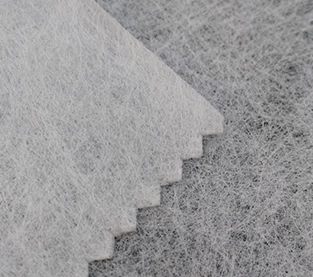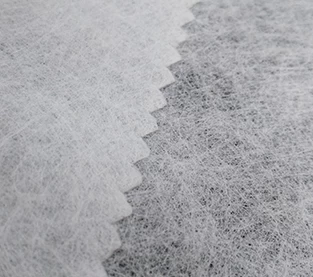Product: ES Material Fiber Nonwoven Fabric For Packaging
Raw Material: PP+PE
Nonwoven Technology: thermal bonded
Dotted Design: dot or plain
Gram: 25 gsm - 30 gsm
Color: White
Specification: custom
Sample: Can be provided without charge, freight to be collect
Applications:
Medical(20-60gsm): face masks,diapers,bed sheets,curtains,pillow covers,sanitary,etc
Packaging(25-30gsm): tea bag, coffee bag/filter paper, dust-proof covers.etc
Product: ES Thermal Bonded Non Woven Fabric For Tea Bag
Raw Material: PP+PE
Nonwoven Technology: thermal bonded
Dotted Design: dot or plain
Gram: 25 gsm - 30 gsm
Color: White
Specification: custom
Sample: Can be provided without charge, freight to be collect
Applications:
Medical(20-60gsm): face masks,diapers,bed sheets,curtains,pillow covers,sanitary,etc
Packaging(25-30gsm): tea bag, coffee bag/filter paper, dust-proof covers.etc
Product: Composite Non Woven Paper Desiccant Packaging Material
MOQ: 1000 kg
Material: Composite Non Woven Paper
Specification: Custom sizes.
Design: Welcome custom logo and design. Welcome OEM.
Color: Full Color of CMYK,Pantone Color as customer requirements
Weight: Based on size & material,thickness
Delivery Time: 10-15 days after confirmed the final artwork and order
Product: Desiccant Wrapping Paper
MOQ: 1000 kg
Material: DuPont Material
Specification: Custom sizes.
Design: Welcome custom logo and design. Welcome OEM.
Color: Full Color of CMYK,Pantone Color as customer requirements
Weight: Based on size & material,thickness
Delivery Time: 10-15 days after confirmed the final artwork and order
Product: Bi-component Non Woven Fabric Desiccant Packaging Material
MOQ: 1000 kg
Material: Bi-component Non Woven Fabric
Specification: Custom sizes.
Design: Welcome custom logo and design. Welcome OEM.
Color: Full Color of CMYK,Pantone Color as customer requirements
Weight: Based on size & material,thickness
Delivery Time: 10-15 days after confirmed the final artwork and order
Product: Spunbond Non Woven Fabric Custom Desiccant Packaging Material
MOQ: 1000 kg
Material: Spunbond Non Woven Fabric
Specification: Custom sizes.
Design: Welcome custom logo and design. Welcome OEM.
Color: Full Color of CMYK,Pantone Color as customer requirements
Weight: Based on size & material,thickness
Delivery Time: 10-15 days after confirmed the final artwork and order
The process of producing polylactic acid(PLA Non Woven Fabric On Sales) by American LLC company is as follows: corn starch is hydrolyzed into glucose, andthen lactic acid is used for anaerobic fermentation. The fermentation processis neutralized with liquid alkali to form lactic acid. After the fermentationliquid is purified, the purity is 99 by electrodialysis. .5% L-lactic acid. The PLA production process by lactic acid has: (1) direct polycondensation method,and dehydration polycondensation is carried out using a solvent under vacuum.(2) A non-solvent method in which lactic acid is formed into a cyclic dimerlactide and is subjected to ring-opening polycondensation into PLA.
A research institute in the United States successfully developed the waste potato after cheese production into glucosesyrup, and then fermented it into a lactic acid-containing yeast solution byelectrolysis, and separated by electrodialysis to evaporate the water to obtaina polylactic acid capable of forming a film and a coating. As a fresh-keeping bag and a packaging material instead of polyethylene and waterproof wax.


France's Erstein Sugar Factory and auniversity have developed beet as a raw material, first decomposed intomonosaccharides, fermented to produce lactic acid, and then chemically polymerized lactic acid into polylactic acid, and can also use the industrial sugar process to waste the sugar. The liquid is used to produce polylacticacid, and the production cost is greatly reduced.
Japan Bell Textile Co., Ltd. ferments polylactic acid(Degradable Nonwovens Vendor) from corn as raw material, and uses polylactic acid to make biodegradable foaming materials. The process involves mixing a special additiveinto the polylactic acid, controlling its molecular structure to becomeeasy-foaming particles, and adding an organic compound foaming agent usingcarbohydrates to form in a molding machine. The high pressure steam is heatedto form a foamed material. The strength compressive stress, cushioningproperty, and chemical resistance of the material are the same as those of polystyrene plastic, and do not pollute the environment after incineration, andcan also fertilize the field.
According to relevant media reports, Hycail Materials Industries, a European biodegradable plastics manufacturer, has recently made break throughs in improving the development and production ofpolylactic acid (PLA) temperature resistance.
The poor temperature resistance of PLA materials(Environmentally Friendly Non-Woven Factory) has always been a difficult problem to solve, and the newlyintroduced HycailXM1020 material can withstand temperatures of 200 °C without deformation, even ifthe materials containing fat and liquid foods are not deformed or damaged bymicrowave heating, can withstand The microwave was heated at 205 °C for 30 minutes. At present,HycailPLA's production facilities in the Netherlands have produced hundreds oftons per year, and Hycail is preparing to build large plants with a capacity ofat least 25,000 tons per year.